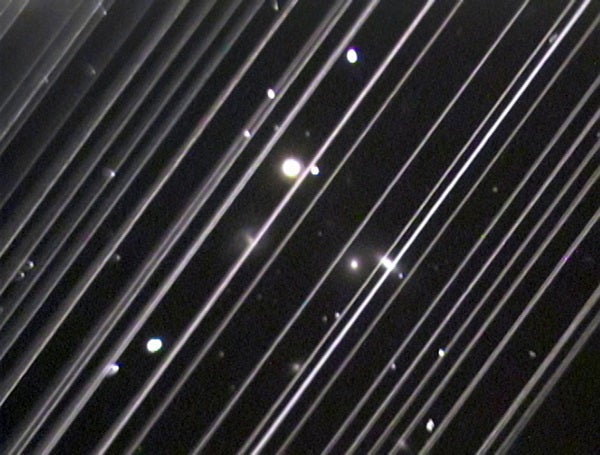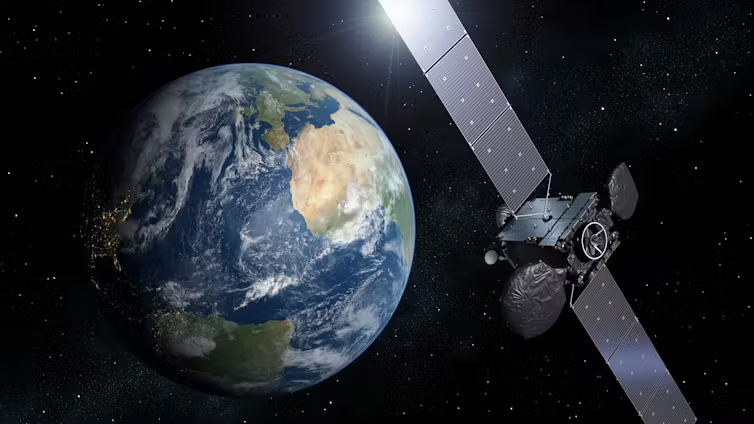It’s June, and I’m planning the Strange Universe column for the November issue. I decide to make it topical and have it jibe with Halloween and trick-or-treat. I’ll call it, “What scares astronomers?”
Subject decided, it’s time to take a break from all this hard work; so, procrastinating, I open today’s paper. Jumping out at me from the page is the headline, “Astronomers Fear …”
“Astronomers Fear”? What perfect synchronicity!
Then I see what the world’s astronomers are fearing. It’s no joke. SpaceX, along with several other companies, is launching or planning thousands of new orbiting satellites. There will be more visible satellites than naked-eye stars! The sky will be despoiled forever.
It seems the worst-ever Halloween trick. But I don’t want to make this page depressing, so I’ll modify the message: My list of traditional and newly created observing impediments will include solutions and happy sides.
On astronomy internet forums, one finds countless problems and complaints. For example, some of the finest equatorial mounts have small, embedded polar axis telescopes and reticles for accurate alignment. Some folks bought these on the used market. Now they’ve discovered the reticles’ markings only go to the year 2015, and updated reticles are not available.
But these issues only rate a 4 on the astro-bummer scale, since there are apps and workarounds for such problems. A much stickier trick-or-treat situation is the common problem of a neighbor installing a yard light that throws intense glare in all directions. You’d talk to the guy, but he’s got infamous anger management issues. The alternative astro-solution is putting up a fence to block the glare. Alas, you live in one of those communities where the local zoning board dictates every construction detail, and the kind of high fence you envision was last granted a permit in 1792.
It was just this fear that drove me to purchase enough acreage around my house that only a new penitentiary could create illuminatory anguish. That specific example comes to mind because I was actually hired to teach astrophysics at the Bedford Hills Correctional Facility for four years to select inmates needing science credits to get a college degree. (A guard always stood outside the room during lectures. It was a truly captive audience.) The warden gave me permission to bring in a telescope and take the class into the yard to look at planets. Think your sky has a bad glow? I actually once asked if we could kill the lights for half an hour. Although I was joking, I’d hoped the impossible might somehow unfold.
Which brings us to the ultimate astronomers’ nightmare. Picture it: Police arrive and arrest you for one of the dumb things you did back in college, and you must spend years looking into a sky as bright as the one over Sunset Boulevard.
Anyway, we’ve all suffered nocturnal mishaps: dropped eyepieces; toes smashed into piers; weird, scary sounds emanating from nearby bushes. But nothing can approach this new SpaceX threat of desecrating the entire celestial sphere. Can this trick-or-treat scenario offer any treats, or only tricks?
Happily, satellites are only visible when they’re in sunlight. They orbit in darkness throughout the night between October and February over mid-northern countries. For the rest of the year, they only stand out against a black sky during the first and final 40 minutes of full darkness — meaning you won’t see satellites 80 percent of the night. We can adapt.
Satellites and penitentiary lights aside, there’s more good than bad on the horizon for backyard observers. The year’s best meteor shower, the Geminids, is improving over time. For astrophotographers, major image enhancement techniques like stacking are becoming better known and easier to enable. All in all, I think the art, science, hobby, and pleasure of observing the universe is only getting better.










